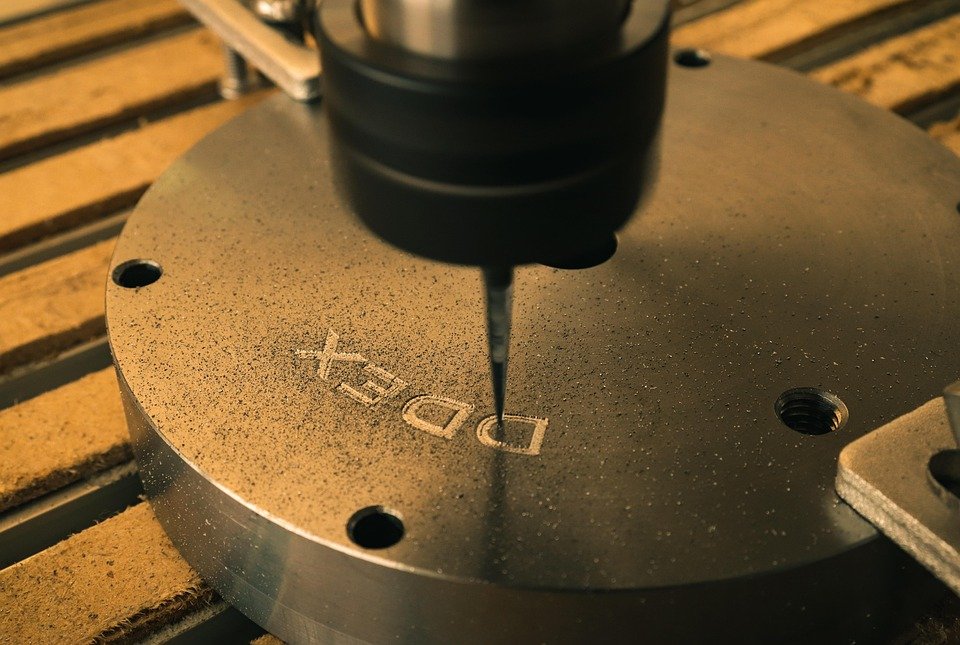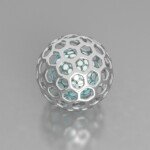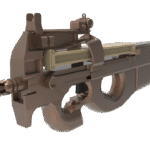Unlocking Accuracy: Your Comprehensive Hobby CNC Mill Buyer Guide
CNC Milling’s world goes beyond industrial workshops to land directly in home garages and manufacturer spaces. For amateurs, designers and small-scale creators, the CNC Mill offers exciting possibilities: engraving complex logos, machining custom drone parts, prototyping or making unique jewelry. But there is a dazzling array of options from budget suites to nearly professional machines that can feel overwhelmed by choosing the right person. This guide cuts down on noise and outlines the key factors you want to consider before investing, ensuring your machine can empower creativity, not frustration.
Your hobbies: Main things to note when purchasing CNC mills:
-
Budget: Set realistic expectations:
- Low-end ($1,000): Mainly desktop (3018 variants are very common). Best for cork, plastic and carving. Often a lot of assembly, tuning and potential upgrades (such as better spindles). Great for learning the basics, but with a limited range of precision, rigidity and matter.
- Medium Distance ($1,000-$5,000): Significant improvements are provided in terms of build quality, rigidity (usually steel frames), spindle power (500W+), and work area size. Hardwood, soft metal (aluminum, brass) can be consistent with care and suitable tools. Popular options here include machines from companies like Shapeoko, Onefinity, Carvera or QueenBee. Expect better software compatibility and support.
- High-end Amateurs ($5,000+): Bridge the gap to a professional machine. With enhanced accuracy (ball screws instead of lead screws), robust construction, stronger spindle (usually 1.5kW+ AC), larger working envelopes, higher dust collection and strict assembly/QC. It can be machined reliably, and even harder metals can be handled with patience and expertise. Options include brands like Soup Kit or Tormach’s PCNC 440. Think twice before diving – know if your project is projected real This level is required with outsourcing complex parts.
-
Workspace and physical requirements:
- footprint: Carefully measure your bench or floor space. Remember, including additional computer access space, material handling, tool replacement and dust extraction hoses. Desktop mills require a solid table; larger machines require dedicated heavy-duty surfaces or brackets.
- strength: Check voltage requirements (110V vs. 220V). High power spindles usually require 220V. Make sure your workshop circuits can handle it.
- Emission control (dust and noise): CNC milling produces a lot of dust/swarf and noise. Factors, cost and space for dust extraction/vacuum systems and hearing protection. The shell is very helpful.
-
Material Functions and Work Envelopes:
- What will you cut? Evaluate your main material honestly:
- Plastic/PCB engraving: Most budget machines are enough.
- Hardwood: A moderately rigid machine and a powerful spindle are required.
- Aluminum/brass: High stiffness, low ejection and sufficient spindle power/coolant (usually mist or air explosion) are required. It is recommended to be medium distance and upward.
- Steel/Stainless Steel: Push the limits of most hobby machines. Extreme rigidity, high power, slow feed and deep expertise are required. Outsourcing frequently for best results.
- Work envelope (cut area): Match the size (X, Y, Z Travel) to your project. Not only the biggest piece, but also the vise/fixed space. It is a lot more costly to buy a potential customer who is too small.
- What will you cut? Evaluate your main material honestly:
-
Accuracy, accuracy and rigidity:
- Rigidity is the king: This is crucial for accuracy, surface finishing and cutting harder materials without chatting or breaking. Look for thick steel frames, large linear guides (better than circular tracks), and minimal bending of the Z-axis. Avoid fragile squeezes on demanding projects.
- Drive system: Lead screws (anti-back nut help) are common. Ball screws offer high accuracy, speed and repeatability, but increase costs. The belt is usually only on the basic engraver.
- Resolution and repeatability: Check specifications (usually in millimeters or one thousandth of an inch). Better is…better, but rigid limits can achieve achievable accuracy regardless of the athletic ability. The actual tolerance of a good hobby machine is usually about ±0.1mm to ±0.05mm.
-
Software and electronic ecosystem:
- Control software: The G code generated by the CAM software is required to be run. Popular hobby controllers include GRBL-based (multifunctional, open source), MACH4, UCCNC and LinuxCNC. Ensure compatibility with the selected machine/control board.
- CAD/CAM software: This is where you design and generate tool paths. Free options (Freecad, Fusion 360 for personal use) and powerful paid options (Vectic, Fusion 360 Commercial).
- Motion control panel: this "brain" Explain the G code. Reliability and feature set matter (spindle control, probe support, advanced input).
-
Build quality and assembly:
- Pre-assembled and kit: The kit is cheaper and provides a deep learning experience, but requires a lot of time, tools and calibration skills. Pre-assembled machines can make you run faster, but cost more.
- Component quality: Carefully check the specifications of spindle bearings (preferred for ER clamping systems), linear guides (profile guides with circular rods), stepper motor torque (NEMA score), and drive electronics. The mass component can greatly affect life and performance. Research users comment carefully.
- Support, community and upgrade:
- Supplier Support: Is the documentation clear? Will the company respond to the question? Avoid obscure brands that do not have support.
- Community Strength: Active forums (such as dedicated Facebook groups or Reddit) are invaluable for troubleshooting, tips and mods.
- Future Prevention: Can the machine be upgraded? Better spindle, controller or even shaft extension? The modular design extends the service life of the machine. Beware that the machine depends entirely on proprietary parts.
Conclusion: Choose to create success wisely
Investment hobby CNC Mill has opened up a tangible digital manufacturing world. By carefully weighing your budget, project requirements (especially materials and dimensions), workspace limitations, and prioritizing rigidity and component quality, you can choose a machine to empower you with creativity in the years to come. Remember, the perfect machine with your Actual The expectation of material, accuracy and the time you can set, operate and maintain.
For amateurs, the journey of using CNC mills to learn and make tangible objects is incredible. However, when your project requires complex geometry, extremely high tolerances (±0.025mm or tighter), challenging materials (such as titanium or hardened steel), or higher yields, it quickly exceeds the actual limits of high-end amateur machines. At this point, it is crucial to work with professional services.
This is Greglight CNC machining Good at it. As a professional five-axis CNC machining manufacturer, we have advanced equipment and proprietary production technologies specifically addressing the challenges of complex metal parts manufacturing. Unlike amateur machines, our state-of-the-art five-axis centers offer unparalleled accuracy, degrees of freedom of complex geometry, superior surface finishes, and consistency across batches. We are not only milling parts; we offer comprehensive solutions including expert fixation, precise completion, and complete post-processing services such as anodization, electroplating or painting. Whether you need a one-time prototype from an exotic alloy in aluminum or stainless steel, or a complex range of components, Greatlight offers precision and reliability, often at amazing competitive prices and fast turnaround speeds.
Start small and master your craft with your hobby machine, remember that professional-grade five-axis CNC machining is easy to access when your ambition or accuracy requirements are upgraded.
FAQ section:
-
Q: What are the main differences between 3-axis, 4-axis and 5-axis hobby CNC mills?
A: * 3 axis (X, Y, Z): Move the cutter to the left/right, forward/up/up. Most standard CNC parts can be created, but undercut or complex contoured surfaces cannot be easily handled without repositioning the workpiece.
- 4 Axis: Add a rotation (usually the A-axis that rotates around X). Allows complex curves or functions to be machined on multiple sides without manual repositioning, ideal for milling around cylinders (e.g., rotors, cylinders).
- 5 Axis: Add a second rotation axis (B or C). The cutter can be approached to the workpiece from any angle at the same time. Essential for highly complex free-form surfaces (aerospace, molds, prosthetics). notes: The real simultaneous 5-axis machining is Extremely rare and complex Due to cost and technology, in the hobby market. most "5-axis hobby kit" It takes tremendous expertise to be a DIY project and is still far from professional competence.
-
Q: Can CNC mills really cut metal?
one: Yes, but there are great limitations. Mid-range and high-end hobby machines can feasible Use appropriate tools (sharp end machines designed for metal), conservative feed/speed, proper workpiece fixtures and soft metals (such as aluminum, brass and copper) that are usually air explosion or mist coolant systems. On powerful high-end hobby machines, you can be very careful but slow, hard-working tools, requiring expertise, quality/results do not match professional machines. Hardened steel or titanium is firmly in the professional CNC service field.
-
Q: How much continuous maintenance does CNC mill require?
one: Regular maintenance is critical to life, accuracy and safety: Daily: Clean dust/snowflakes (key), visual inspection. Weekly: Lubricate the rails/screws according to the manufacturer’s instructions. Regular: Check tension on the belt/drive, tighten the fasteners, check wiring, calibrate. After long-term use, spindle bearings may require professional service. Factor maintenance time is put into practice.
-
Q: How long does it take to start and produce good parts?
one: Expect the learning curve to span weeks to months. Learning involves: machine setup/calibration, CAD (design) software, CAM (tool path) software, understanding the feed/speed of different materials, selecting tool selection, workpiece fixation and troubleshooting machining problems. Be patient; start with simple projects and tolerant materials such as wood or soft plastic.
-
Q: I need a complex, high-precision part made of aluminum/stainless steel for a project. Should I buy a hobby machine for this?
one: Outsourcing is often more efficient and cost-effective for complex, high-precision parts or any consistent amount. Top hobby machines possible Ultimately managing simple aluminum parts with acceptable accuracy, complex geometry or harsh materials requires a hobby of industrial-grade precision, stability and tool life that the factory lacks. Outsourcing to professional services Greglight CNC machining Ensure: Excellent accuracy (±0.025mm or higher), access to five-axis functionality in complex shapes, specialized tools for hard metals, consistent effect across parts, and often faster than dialing in hobby projects. It saves you capital expenses and a lot of study time.
- Q: What simple upgrades have had the greatest impact on budget CNC mills?
one: Focus on improving rigidity, accuracy and tool life: Better spindle/mount (with significantly improved cutting of stronger materials), linear guide (replace circular tracks with contoured guides), reverse folding nuts (on lead screws), premium ER clip kit (minimize tool jump), effective dust-proof shoe/extraction system and high-quality cutter tools. A good darling board system is also crucial.










































